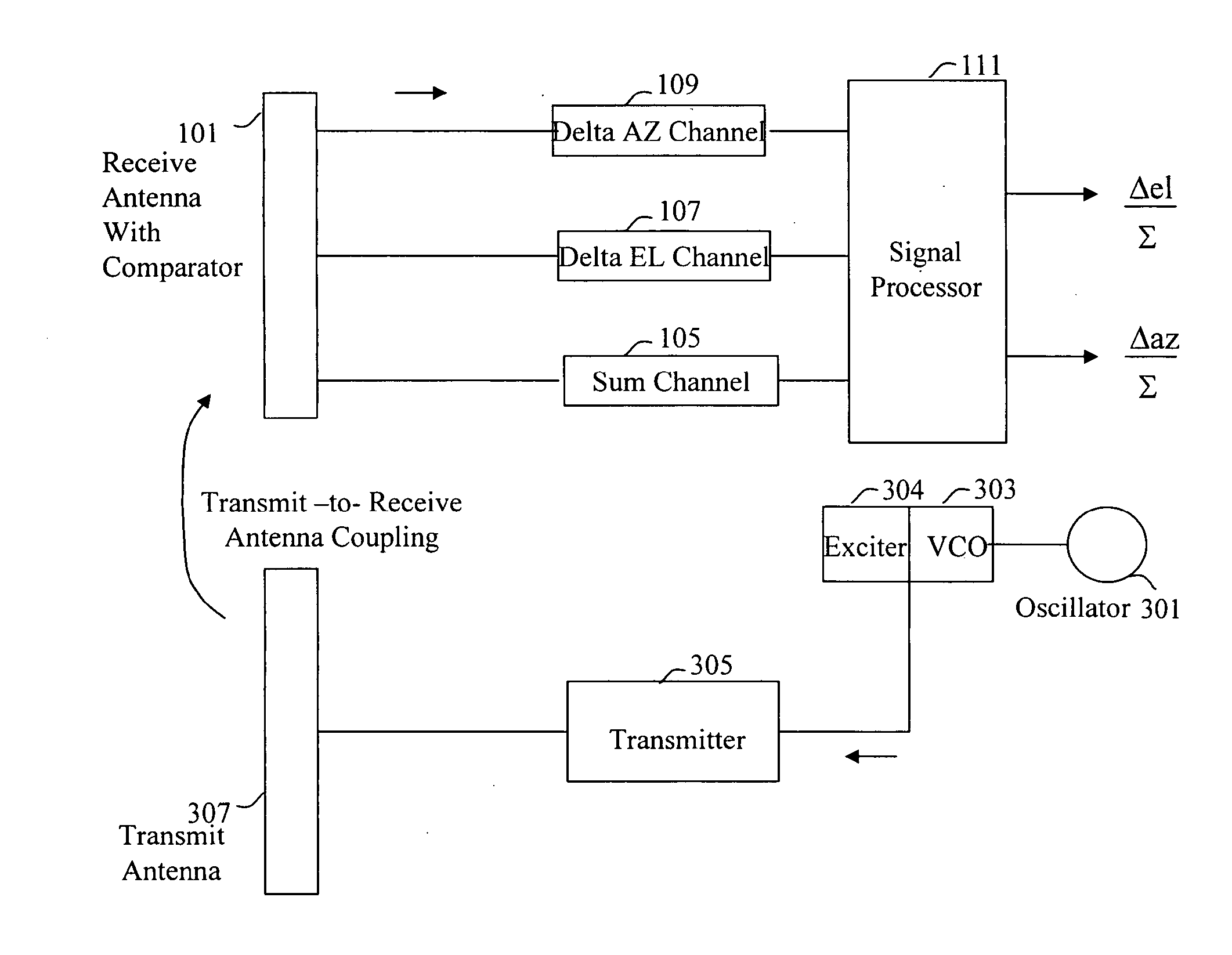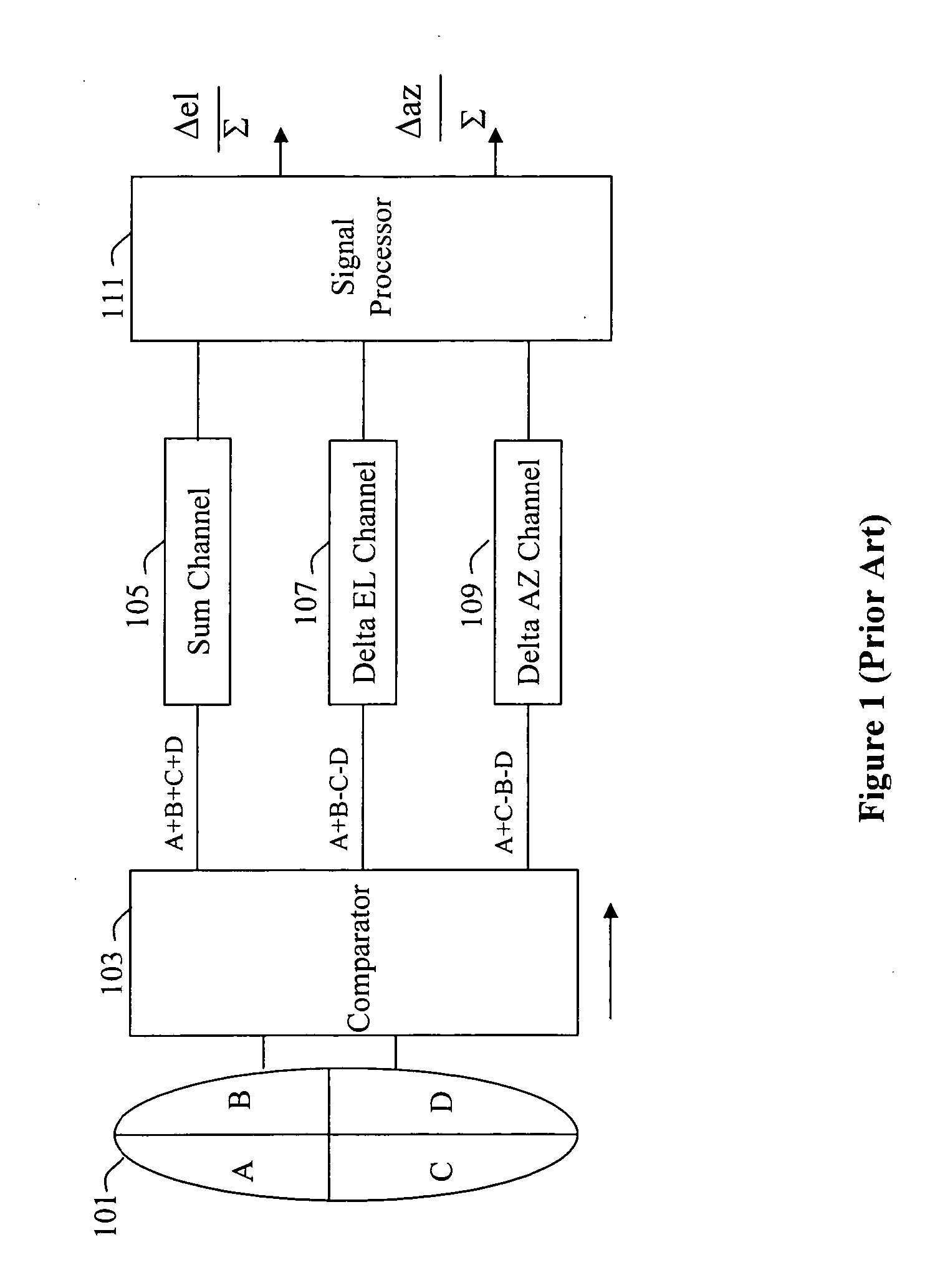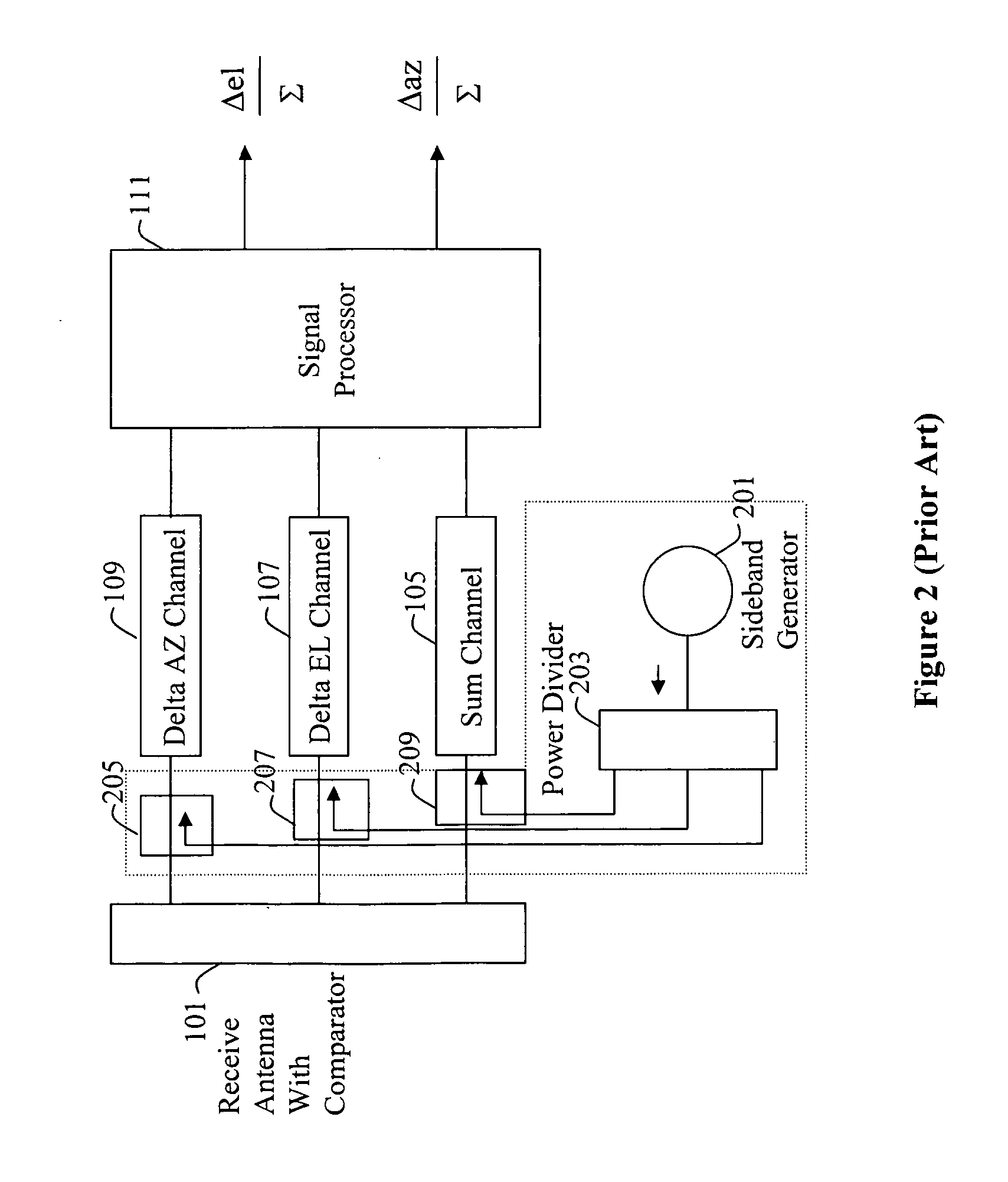System and method for radar calibration using antenna leakage
- Summary
- Abstract
- Description
- Claims
- Application Information
AI Technical Summary
Benefits of technology
Problems solved by technology
Method used
Image
Examples
Embodiment Construction
[0011] Referring now to the drawing wherein like numbers represent like parts in each of the several figures and lines with arrow heads indicate the direction of signal travel, the calibration scheme utilizing natural antenna leakage is explained in detail.
[0012] The calibration signal to be used is a wideband sinusoidal frequency modulated (FM) signal produced by applying a sinewave from low frequency oscillator 301 to the voltage output of high frequency voltage controlled oscillator (VCO). The sinusoidal frequency modulated signal can be described by the following equation:
S(t)=A*cos(2πfctΘ(t))
where Θ(t)=β*sin 2πfmt; fc=transmitting antenna frequency; fm=modulation frequency; A=amplitude of the signal; β, the modulation index, is defined as β=ΔF / fm; ΔF is the peak frequency deviation and t=time.
[0013] An exemplary spectrum is shown in FIG. 4 for a modulation index of 2.15. At each harmonic of the modulation frequency, there is a spectral line. For instance, if a 10 KHz modul...
PUM
 Login to View More
Login to View More Abstract
Description
Claims
Application Information
 Login to View More
Login to View More - R&D
- Intellectual Property
- Life Sciences
- Materials
- Tech Scout
- Unparalleled Data Quality
- Higher Quality Content
- 60% Fewer Hallucinations
Browse by: Latest US Patents, China's latest patents, Technical Efficacy Thesaurus, Application Domain, Technology Topic, Popular Technical Reports.
© 2025 PatSnap. All rights reserved.Legal|Privacy policy|Modern Slavery Act Transparency Statement|Sitemap|About US| Contact US: help@patsnap.com



